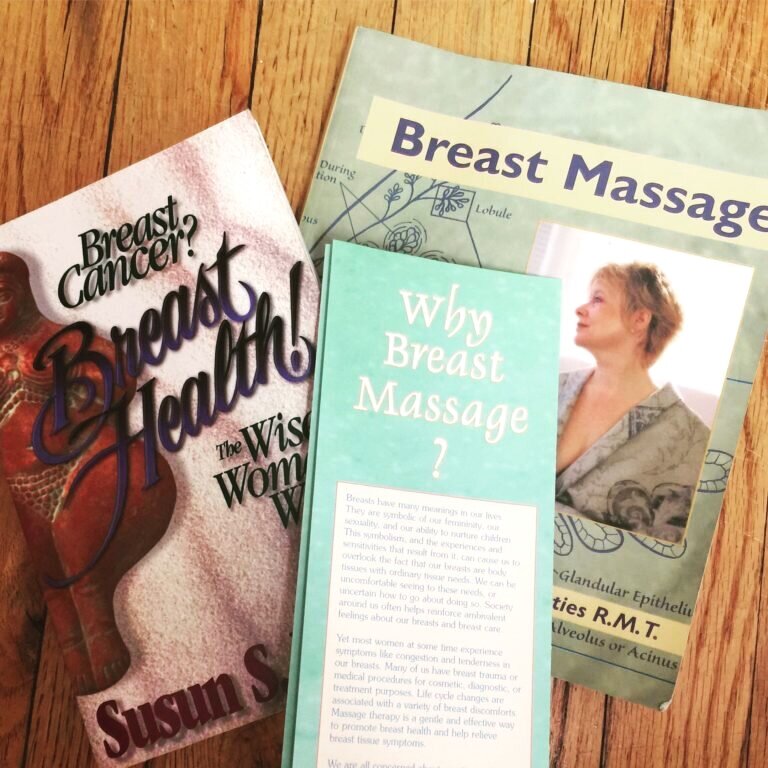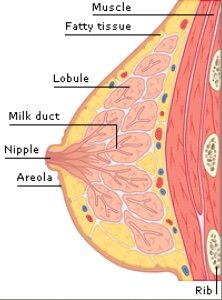Massage for Breast Health- Here’s the scoop
It’s confusing growing up with a uterus and breasts. I have spent years studying and expanding my knowledge of the beautifully complex female reproductive system. These parts always felt mysterious and distinctly other from the rest of my body. After charting my cycles for 5+ years, dappling in Mayan Abdominal Massage, and venturing into v-steams, I have gained an appreciation for what my lower half can do. Pregnancy, labor, and delivery left me in awe of my own pelvic capabilities. And now, after breastfeeding for a year, my eyes have been opened to what those (not so) feeble A-cuppers are designed to do.
So when I was invited to attend a breast massage workshop hosted by Midwife, Massage Therapist, and Women’s Health Extraordinaire, Susanrachel Condon with the Earth + Sky team, I was delighted, if not also a little bemused. I thought, “That’s all good and well, I’m down for massage any day of the week, but how can we spend 6+ hours talking about rubbing boobs?”
I was very quickly proven wrong. Breast massage includes work on the upper back, shoulders, and upper arm areas. All of course which are connected to the breast tissue in one way or another. The practitioner gave me a few options – she could massage on the skin like a regular massage, through a towel, or she could instruct and guide me to massage myself depending on my comfort level. (I opted for the full monty!)
The lecture part of the class revealed so much on the anatomy, development and health of the female breasts. The same breasts I covered up in misfitted brasseries in 6th grade had a completely different cellular structure than the breasts I carried around in college, which were vastly different than the breasts I have been nurturing my daughter with for the last year. In short, the female breasts do not remain stable throughout a woman’s life. Their evolution is fantastically fluid. (No pun intended.)
Between the ages of 17-24 the breasts develop the most alveoli they will ever contain (except for pregnancy). Through continual ovulation and production of high levels of hormones, breasts continue their life of prepping for lactation. Around the age of 35, there is a slow, but steady waning of hormones. The glandular development begins to decrease. This means that the mid-40’s woman’s breasts are less dense with less glandular and connective tissue. In other words, the breasts prepare for menopause a decade (or more!) beforehand. But don’t worry, the girls take their time, they shed alveoli slowly and thoughtfully.
While on a cellular level, their composition is constantly evolving, so is their palpable quality. A woman may notice at one point in her cycle or season of life, they feel more or less lumpy. More or less sensitive. Or even painful. (Also known as Cyclic Mastalgia, which massage can help relieve.) They change in size. There are few nerve endings in breast tissue, but they respond very directly to estrogen and progesterone. So pain in the breasts, when not stemming from an infection or cyst, is usually referred from somewhere else in the body. It’s crucial that a woman knows her normal – even if that varies in a monthly menarche. Breast massage serves as a great starting point to familiarizing ourself with our breasts and starting the journey of healing our past with all the criticism that comes with growing up female.
While on a cellular level, their composition is constantly evolving, so is their palpable quality. A woman may notice at one point in her cycle or season of life, they feel more or less lumpy. More or less sensitive. Or even painful. (Also known as Cyclic Mastalgia, which massage can help relieve.) They change in size. There are few nerve endings in breast tissue, but they respond very directly to estrogen and progesterone. So pain in the breasts, when not stemming from an infection or cyst, is usually referred from somewhere else in the body. It’s crucial that a woman knows her normal – even if that varies in a monthly menarche. Breast massage serves as a great starting point to familiarizing ourself with our breasts and starting the journey of healing our past with all the criticism that comes with growing up female.
Some indications for breast massage include swelling in the lymph nodes from edema (raise your hands pregnant and postpartum mamas!). Massage can clear up general congestion and aid tenderness from fibrocystic tissue. As our breast undergo involution, either after weaning or approaching menopause, massage facilitates healthy drainage. It is also highly recommended for cancer patients. Women who have undergone surgery in the upper chest area, such as mastectomy or reduction, find massage helps immensely in the healing process. And lastly, it just downright feels therapeutic. You don’t need a medical reason to indulge in breast massage. In fact a little prevention can go a long way in keeping the girls happy and healthy.
I left the class inspired and excited about all this new knowledge. I had discovered another hidden corridor on learning to delight in my female body. Breast massage felt like I was removing a bra I had been wearing for years and replaced it with a velvety cloak over my whole upper body. I feel like my relationship with my bosom has grown to be even more intimate, respectful, and loving.
So the final verdict? Breast massage is a healing way to appreciate and maintain breast health. I am grateful that I was able to discover this lost art and I hope to carry it on to other women. So what do you say? Let’s #keepthegirlshappy (and healthy!)
As part of our participation in breast cancer awareness month, our staff (and our sister practice Red Moon Wellness in Brooklyn) all participated in advance training in massage for breast health. To schedule a session with one of our therapists click here. To find out more about classes contact Susanrachel Condon, CCCE, LMT, LM, CLC at River and Mountain Midwifery.






